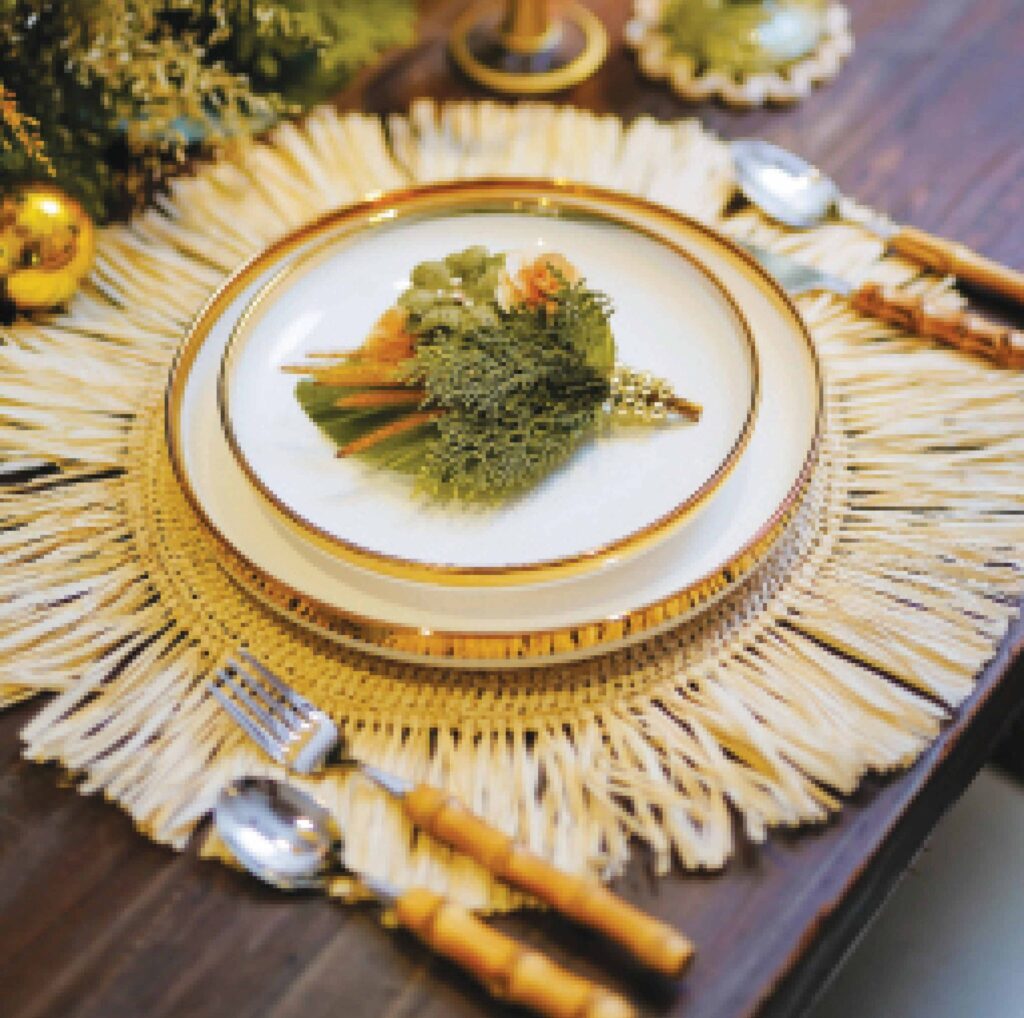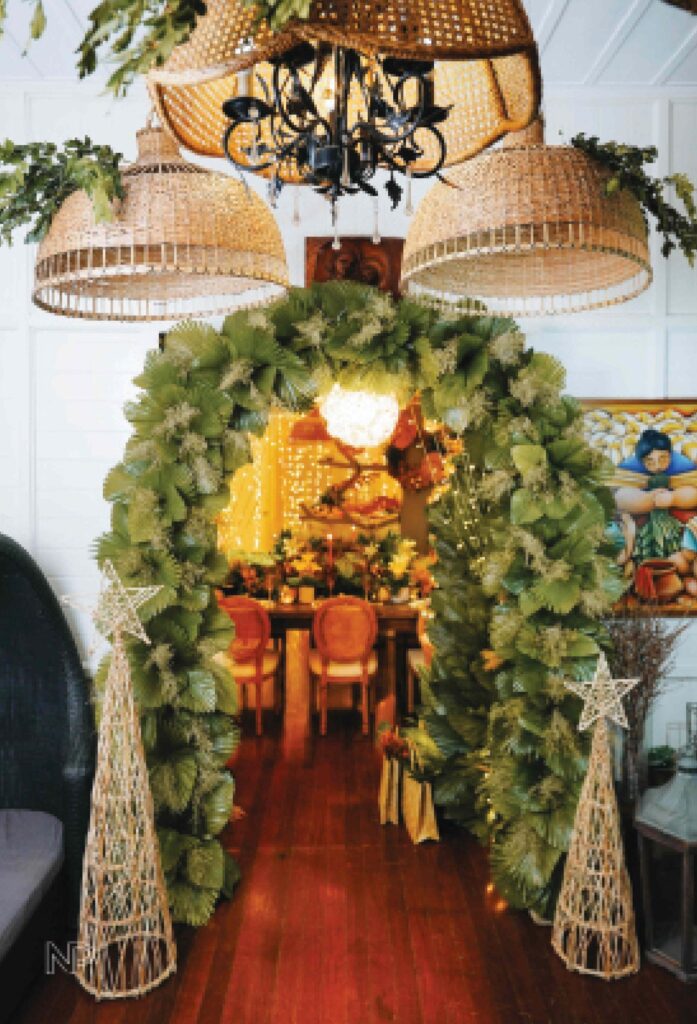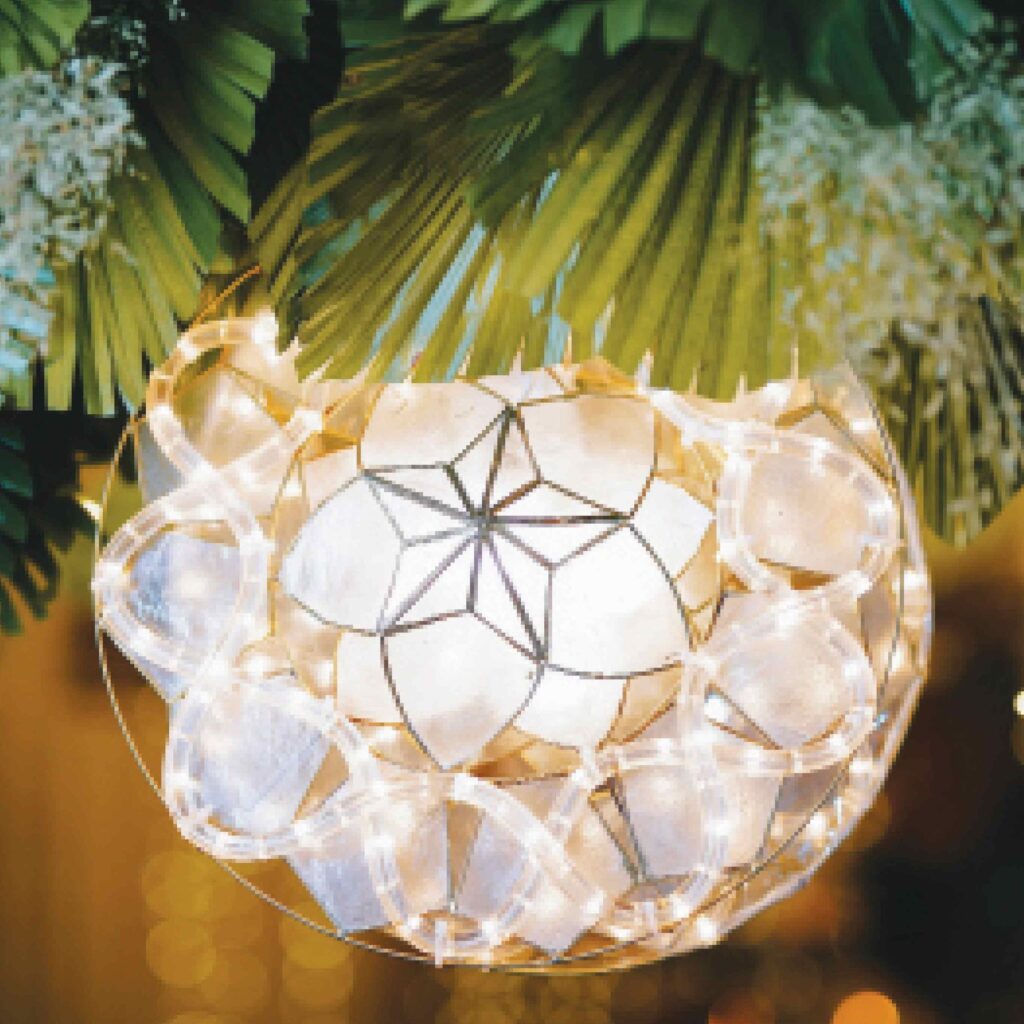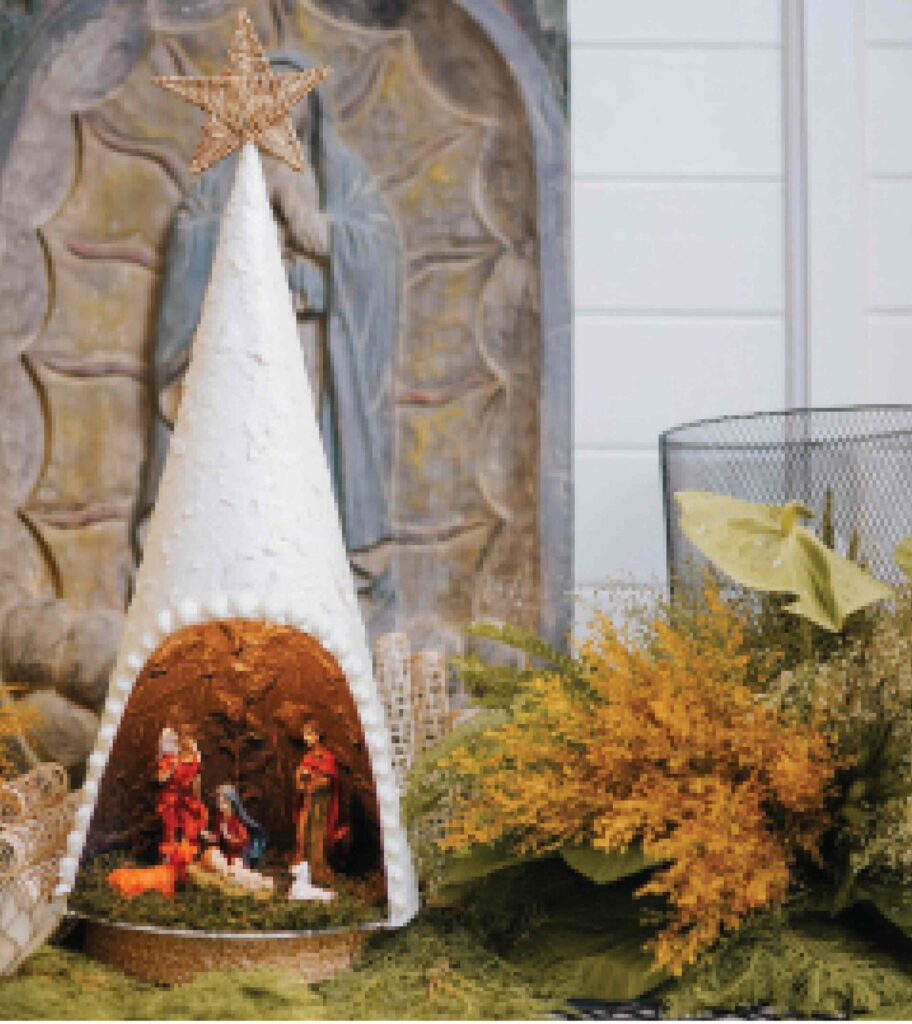Teddy Manuel’s Filipino-inspired holiday arrangements are lush with owers from Baguio, via the Dangwa ower market in Manila, to nearby Divisoria; and several ephemeral masterpieces of anahaw and kamuning leaves. And, of course, there’s the iconic belen.
By Alex Y. Vergara
With prices of imported flowers, from Ecuadorian roses to Dutch tulips, hovering at stratospheric levels these days due to pandemic-related restrictions, seasoned event stylists like Teddy Manuel have little choice but to make do with what’s readily available locally.
Not that he minds. Although the situation isn’t quite rosy yet for the events industry, this hasn’t stopped Teddy from coming up with creative ways in putting together magazine-worthy themed arrangements for the few small, private events he caters to. And this wellspring of creativity is on full display in Teddy’s Filipino-inspired holiday arrangements, which he has created exclusively for PeopleAsia.

Teddy’s Filipino-themed table setting features such elements as anahaw leaves, palay sprays, lilies and anthuriums

One of four “potheads” in his table setting
“In any given situation, it’s just a matter of trying to look at the bright side of life,” he says. “In our line of work, locally sourced flowers and decor remain plentiful and relatively affordable.” The items that make up Teddy’s arrangements, for instance, come from as far north as Baguio, mostly via the Dangwa flower market in Manila, to nearby Divisoria, Dapitan Market and the Landmark.
With his high-ceilinged, two-bedroom post-war home in Manila as his canvas, Teddy is able to fashion several ephemeral masterpieces made primarily of locally abundant leaves such as anahaw and kamuning—from lush greens that line both sides of the main stairs leading to the second-floor lanai, to several slim Christmas trees opposite a table setting teeming with chic but inexpensive Filipiniana.
“Anahaw leaves are sturdy and versatile,” he declares. “A year from now, I can still salvage a good number of leaves from these arrangements and repurpose them into something new.” It’s because anahaw leaves don’t easily dry up and crumble with time. When they turn from green to golden brown, they exude a different “Christmassy” feel that’s more on the earthy side.
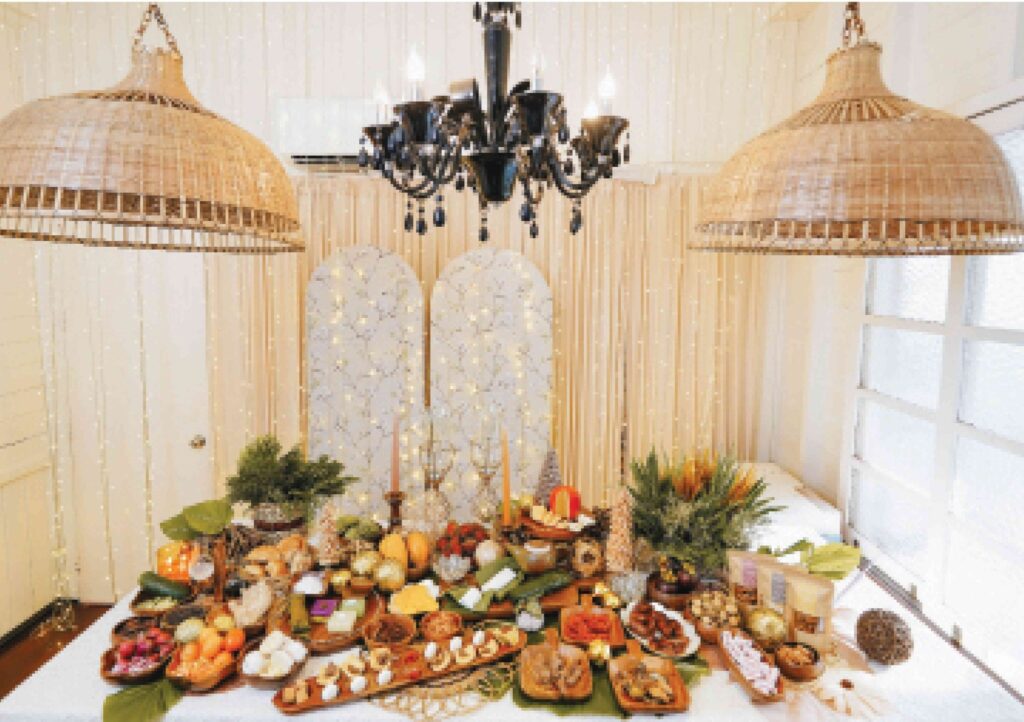
In lieu of Western items, Teddy’s grazing table is laden with native foodstu for Christmas, including kesong puti, pork tocino, beef tapa, danggit and various native fruits
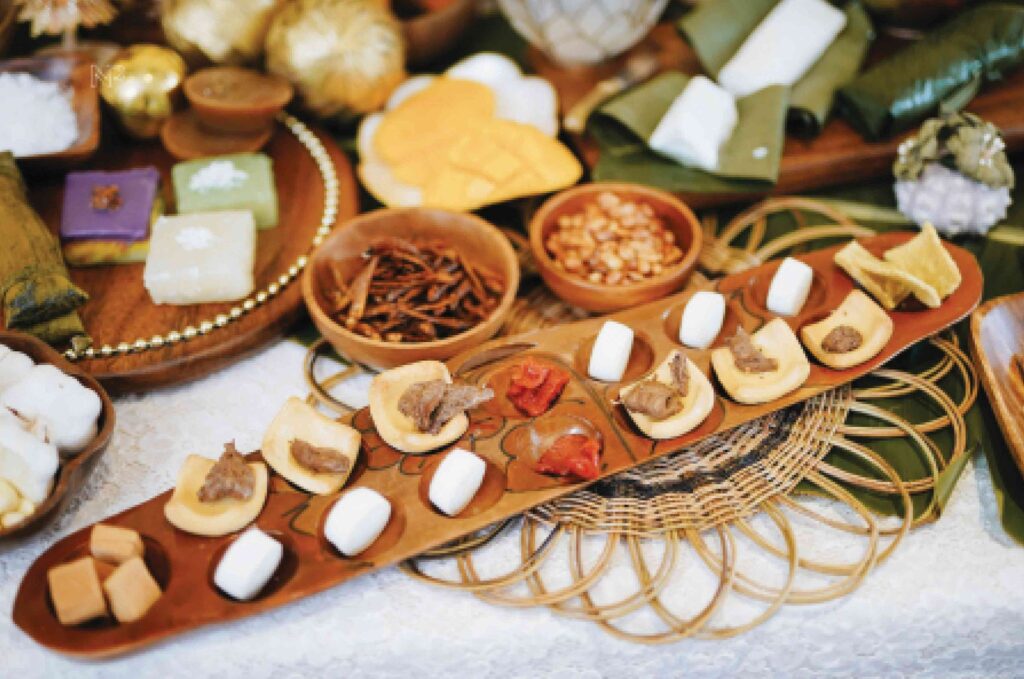
Teddy finds new use for the sungka on his grazing table; Choc-Nut bars for dessert; various spices to go with the tocino, danggit and tapa
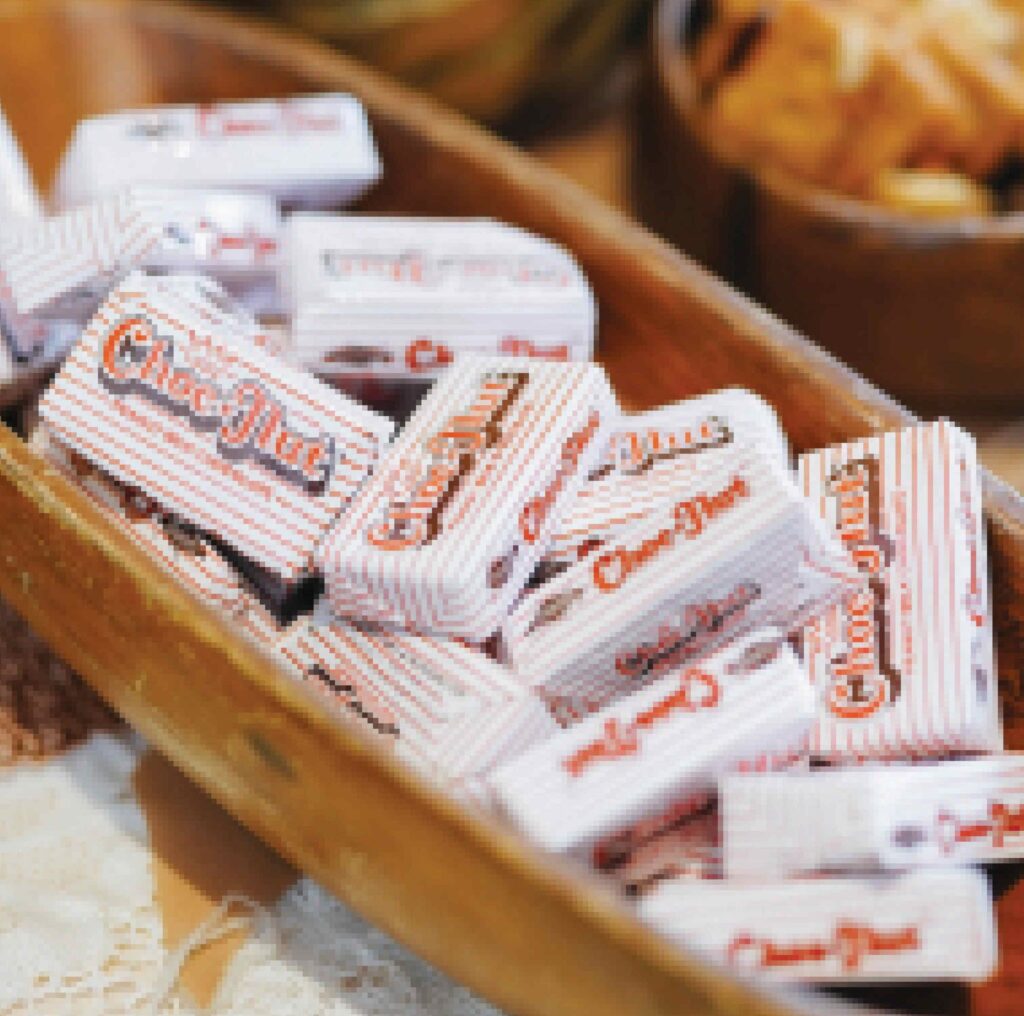
Recurring elements
These leaves, especially the anahaw, are recurring elements in Teddy’s design, which includes an archway separating the lanai- slash-living room from the dining area. And since he loves to cook and entertain friends, no Christmas setup is complete at the Manuel home without a spruced-up grazing table brimming with native delicacies.
“Even the food items I’ve chosen to serve are intentionally Filipino,” he says with a smile. “In lieu of ham, I’m serving bits and pieces of pork tocino, danggit and beef tapa. Although I have kesong puti alongside keso de bola, my keso de bola was processed here in the Philippines to appeal to Pinoy taste.”
Also vying for every available space on the lace-covered grazing table are pieces of pan de sal, kakanin and various local fruits such as mango, atis, mangosteen, rambutan, lanzones and even chesa. The native touch goes all the way down to the sauces consisting of white vinegar and soy sauce, which are perfect condiments when paired with such vegetables and spices as tomatoes, cucumbers, onions, garlic, ginger and pepper.
One of the few evident Western touches in Teddy’s Filipino-themed Christmas is his use of gold Christmas balls. He also purposely limited the color scheme to shades of green with touches of white and yellow in the form of lilies and anthuriums. To give his artificial flowers made of dried wooden shavings some bling, he spruced them up with glitters.
Occasional pops of white and ecru, in the form of capiz bells, wooden balls, woven anahaw fans and abaca cylinders, also underscore the display’s Filipino theme.
Creativity in the time of a pandemic also involves a bit of upcycling. Teddy, for example, repurposed the cylinders, which were originally designed like a scroll that could hold, say, a rolled-up invitation or menu, by grouping them together to form the base for several roses made of wood shavings. The stars that crown his three Christmas trees are also made of woven abaca.
“I purposely avoided using red because I felt it has become too overused for Christmas,” he says. “Besides, had I chosen to add red poinsettias, for instance, they would have looked too Western alongside all these Pinoy elements.”
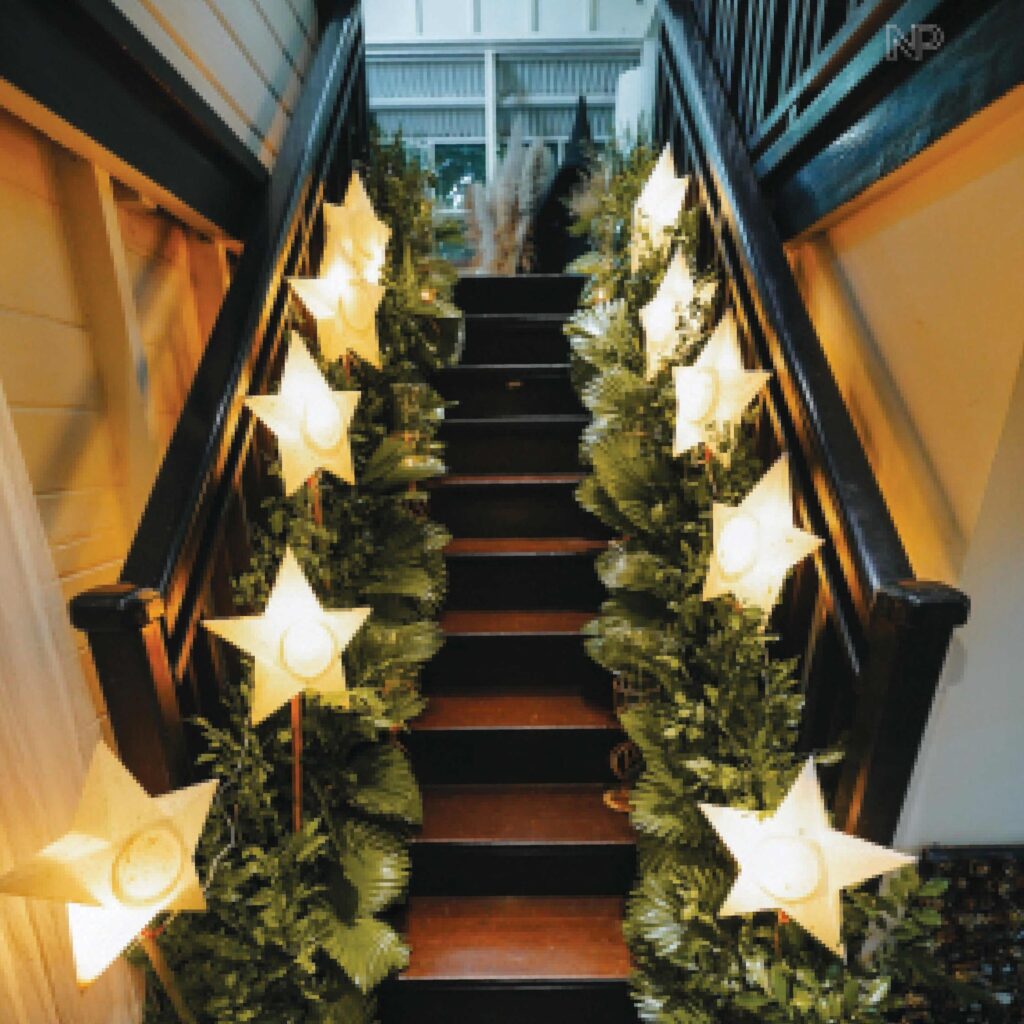
Swirls of heart-shaped leaves
Again, because of the ongoing pandemic, Teddy understands if people are still reluctant these days to hire professionals like him. Just like last year, he’s aware that a growing number of Filipinos are again resorting to DIY projects to put some holiday cheer into their homes, as they begin to count the days to Christmas.
In fact, he even shares with us a few practical tips for homeowners. For instance, Teddy and his team not only trimmed the edges of the anahaw leaves, they also shaped them into hearts. Each Christmas tree also has a base made of a triangular wooden frame wrapped in chicken wire.
Once the tree’s foundation is ready, he goes about inserting the leaves one by one into the chicken wire in a swirling pattern, starting from the base all the way to the top. In lieu of gift boxes wrapped in holiday wrapper, Teddy, again, in keeping with his preferred theme, has chosen little woven bags (bayong) to put his gifts in.
Cascading fairy lights, a staple these days in many a Filipino home, especially with the advent of cheap, energy-efficient LED bulbs, instantly bring magic to almost any holiday setup, Teddy reminds.
“There’s a method of putting the anahaw leaves to cover the chicken wire,” he continues. “If you noticed, they’re all spiraling to one direction, which is left.
I also used bigger leaves at the bottom, reserving medium and small ones as I progressed to the top.”
Green, gold and white
Teddy likewise resorted to the same method he used for his Christmas trees in covering the archway with anahaw leaves. He then stuck the ones that line the stairs as well as those set on the dining and grazing tables into trusty flower foams. To keep monotony at bay, he added delicate-looking sprays of dried palay stalks in green, yellow and white, and various holiday ornaments into his arrangements.
“Solid colors are always safer, more elegant and less risky to use than prints. If you want to play with colors, using two to three main colors is fine. But resorting to too many shades could confuse the look, making it less visually pleasing.”
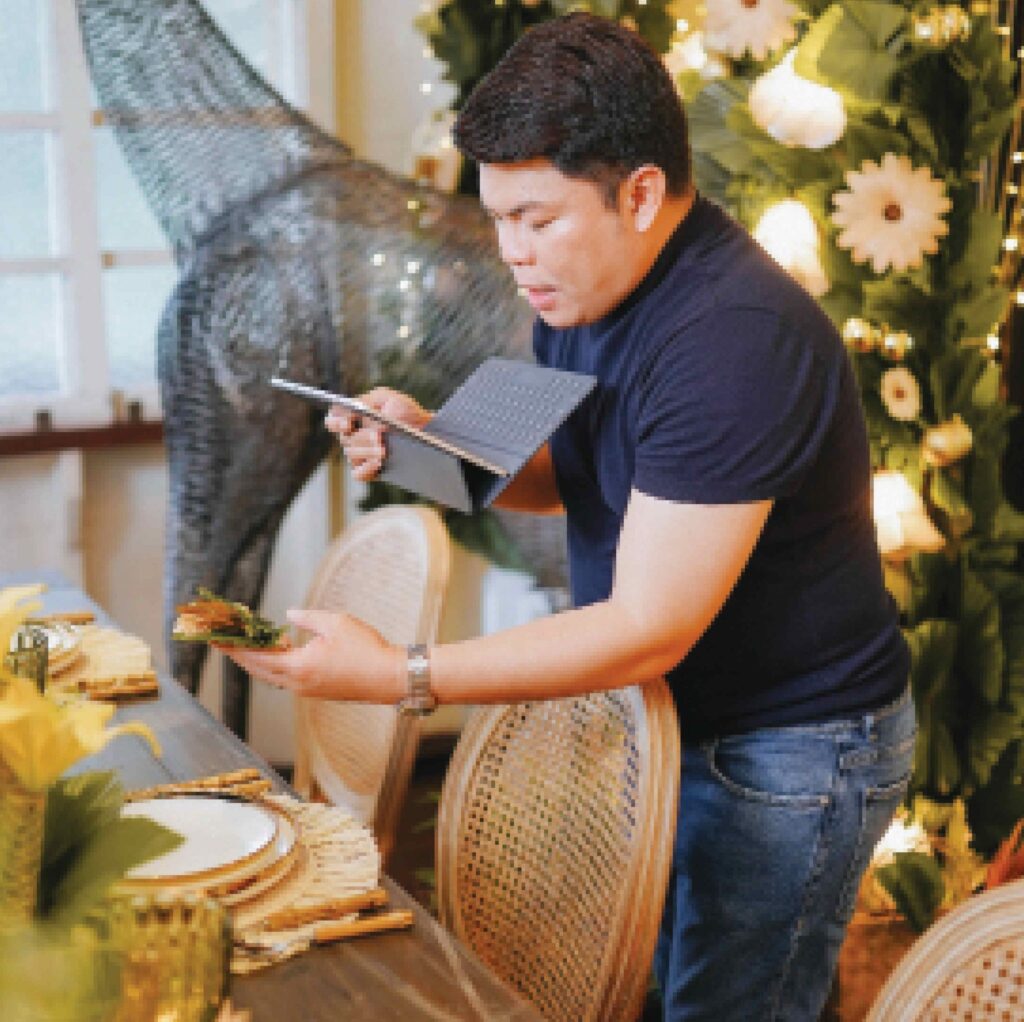
If you’re going to resort to do-it-yourself decoration this Christmas, the stylist advises you to limit your color scheme to two to three colors
His table setting is also a carefully thought-out balancing act between lush and textured ornaments and minimalist pieces like plates and colored water goblets. Teddy, for instance, did away with printed plates in favor of plain white ones edged with gold trims. To bring out the beauty of the six-seat wooden dining table with solihiya-backed chairs, he also refrained from using a tablecloth.
Teddy’s choice of flatware likewise echoes his chosen theme. “The laminated handles of my table utensils are made of real bamboo,” he shares. “That’s why no two pieces are exactly alike.”
Through his table setting, the event stylist also pays homage to the ladies by featuring four identical white pots shaped in the form of a woman’s face. No matter how beautiful they are, the “potheads,” as Teddy calls them, also serve a utilitarian purpose. And this certainly isn’t lost on him since he uses them as vases for his floral arrangements consisting of lilies, anthuriums, palay sprays, ferns and, of course, the ubiquitous anahaw.
Finally, what’s a Filipino Christmas without that iconic focal point that gives meaning to every gift and celebration the springs forth from every Pinoy home during this most festive of seasons? We’re not referring to the parol or Christmas lantern, although Teddy has several of them displayed, too.
“For me, a Filipino Christmas won’t be complete without the belen,” Teddy sums up, as he points to a set of miniature figurines, including the Baby Jesus. His version of the Nativity Scene is featured in a hollowed-out cone also made from capiz and surrounded by almost the same design elements found elsewhere in his house, including ferns, anthuriums, palay sprays and abaca cylinders. “The birth of Christ is the very reason why we celebrate and continue to hope and dream of a better year for ourselves and our loved ones.”



